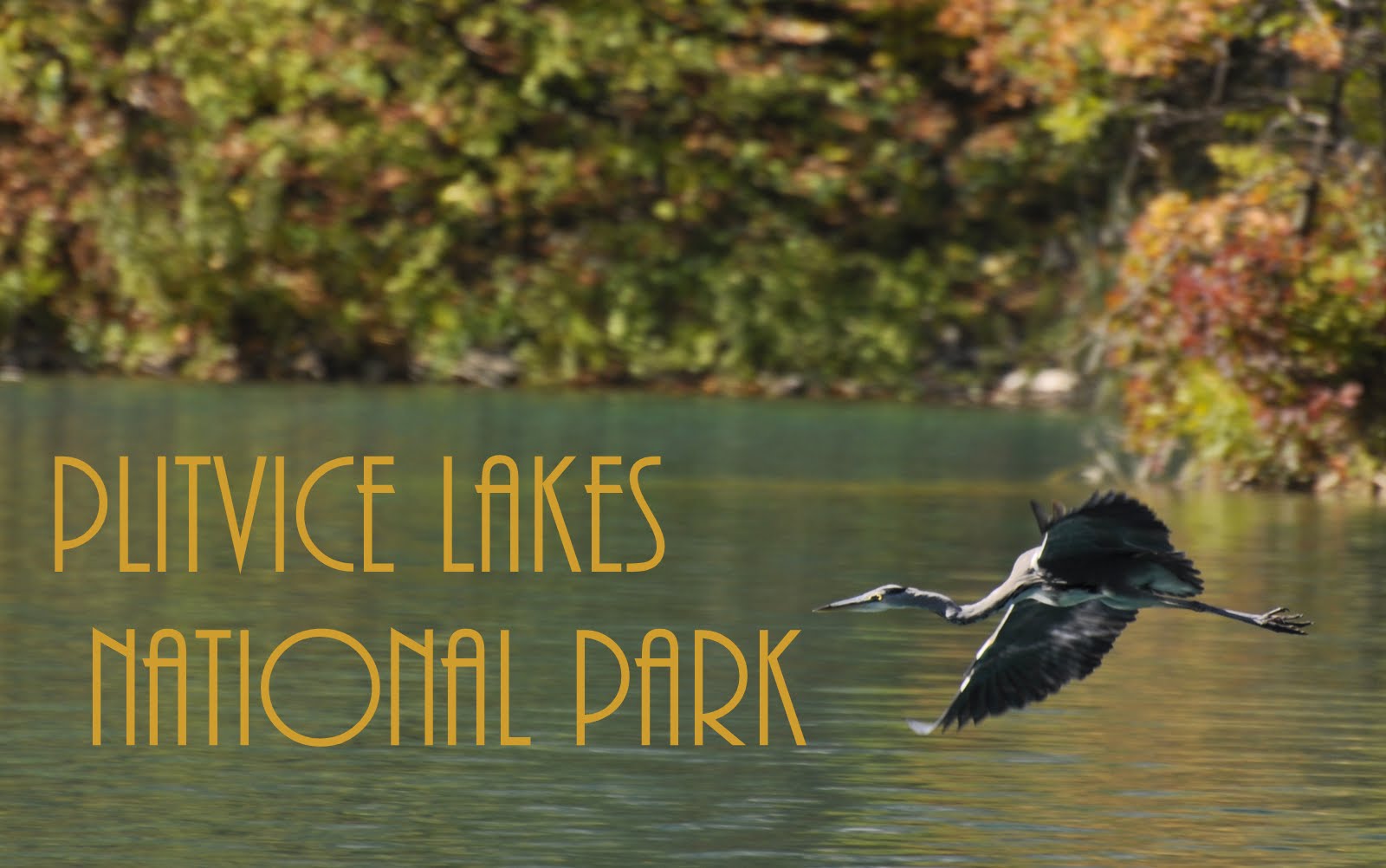
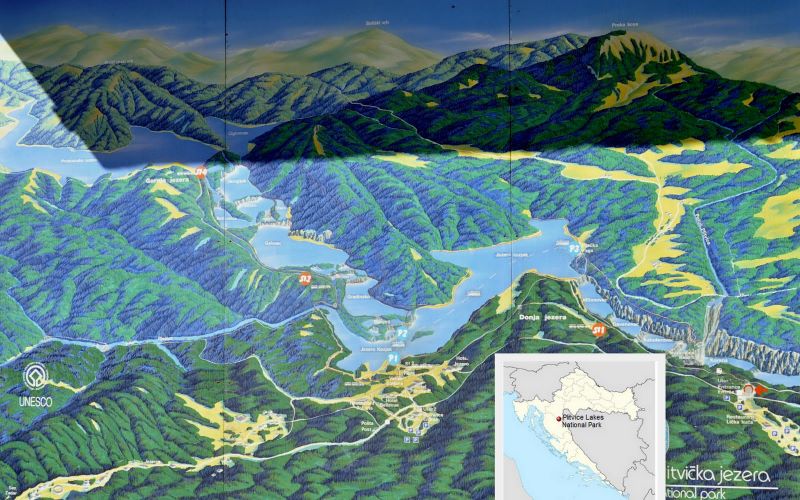
A UNESCO World Heritage site, the Plitvice Lakes National Park is a
necklace of 16 turquoise alpine lakes encircling 3 mountains in the
Dinaric Alps. As the insert from Wikipedia shows, it's almost at the
tip of the Bosnia-Herzegovina arrowhead that cuts into the crescent
called Croatia. (These lakes drain into the Korana river which
separates Croatia from Bosnia and Herzegovina.)
Croatia's first battle of its 1990 war of independence with the Serb-dominated Yugoslav army occurred here -- an all day battle that resulted in a death on each side. Things would get much worse.
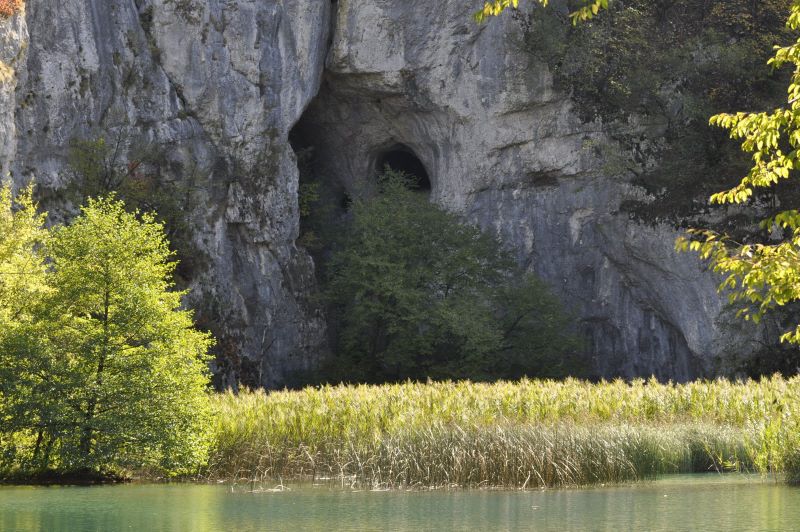
A 100 million or so years ago, the African plate crashed into Europe --
at the reckless speed of nearly a 1/2 inch per year. This helped cause
the rise of the Dinaric Alps mountain range that defines the Adriatic
side of the Balkan peninsula. Since then spectacular scenery has been
dripping into place as acidic water dissolves soft limestone. The
erosion is not always confined to the surface and frequently forms
subterranean caves.
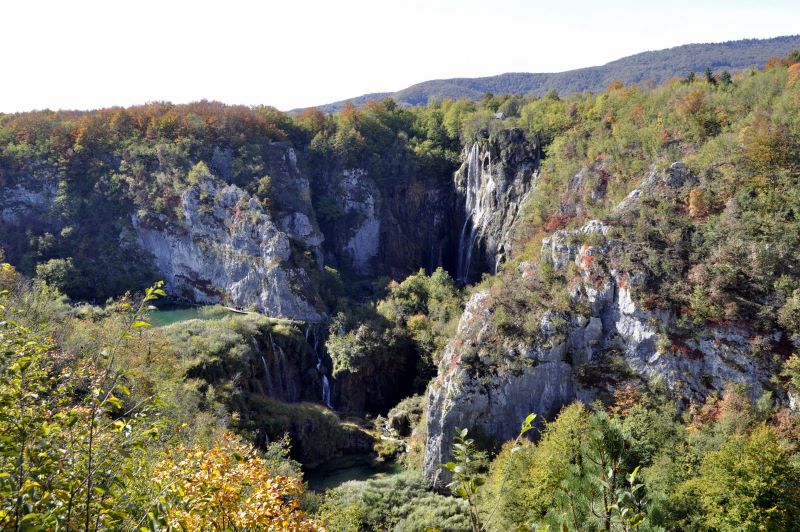
But this slow erosion can do a spectacular job at surface level as here
where it carves this huge gorge. The park contains about 115 square
miles of forested habitat for many large and rare species of European
mammals -- all of which managed to escape our lens, except for a few
tame kittens.
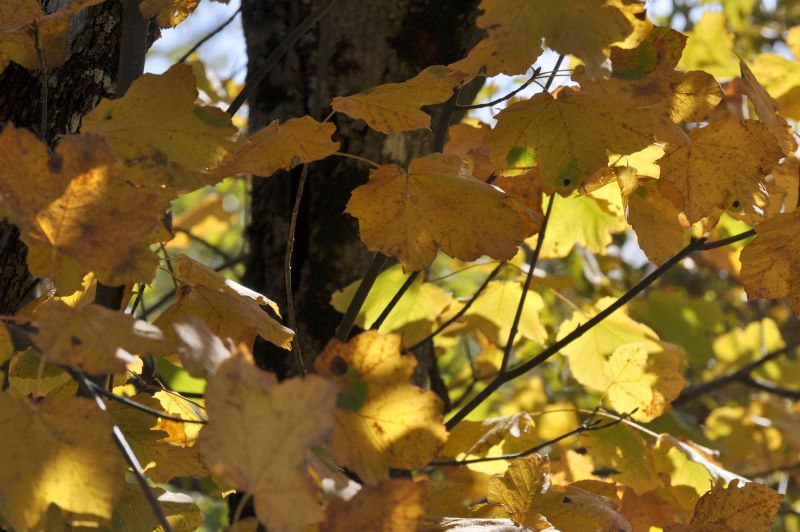
We saw here as much fall color as anywhere in our many trips (and 2
year expat assignment) in Europe. The park contains a range of
microclimates and soil types; flora and fauna vary accordingly.
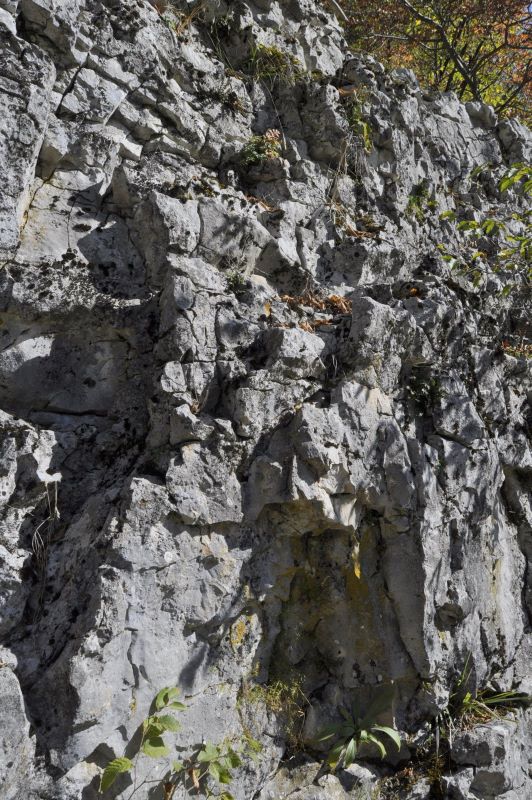
As the limestone deteriorates, it washes into the lakes, giving them a range of colors from the chemicals.

Here's a sample of the color -- and clarity -- of the lakes. We visited
the lower lakes (4 of them). This is Kaluđerovac lake, one of the
most shallow of the 16 at about 40 feet. Kaluń‘erovac at 5 acres is
small like most of the lakes here.

Red fall color was fairly rare but extraordinary against the grayish-white limestone crags.

Fish are easy to spot in the clear water.

The 16 lakes descend about 300 feet over about 5 miles of length -- but
the drops are sudden and marked by waterfalls which break through
natural dams of travertine.

The tourist infrastructure works well at this UNESCO site. An electric
train and boat take about 80,000 annual visitors over long distances.
An excellent set of pedestrian passageways allows them to walk on
water. The park is a model for self-sufficiency: tourist revenues pay
the bills; 1600 employees in total support the tourist infrastructure
and do significant research; cars are all but banned and transportation
leaves a small ecological footprint.
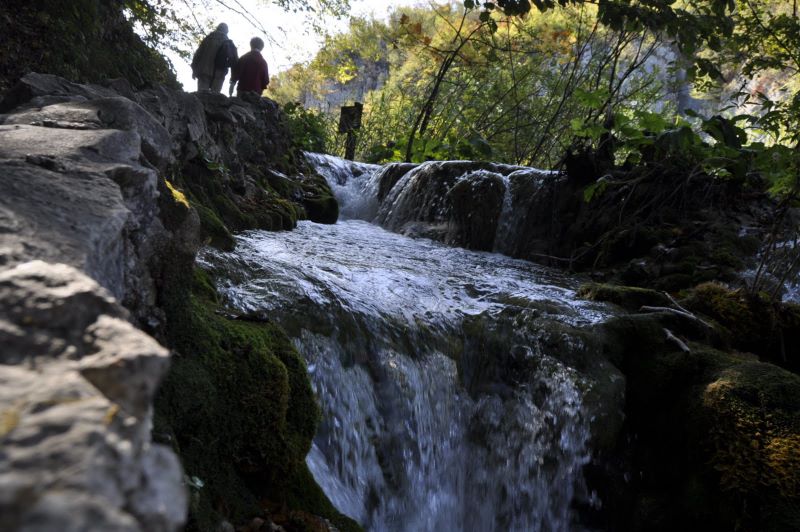
We climbed gradually upward around the waterfalls that here feed Lake
Gavanovac. An unusual geologic process occurs here as water from
underground karst areas uphill reemerges teeming with dissolved
carbonates of lime -- which, in turn, form a crust on vegetation, thus
creating travertine or tufa. This ground formation can span streams,
creating natural dams. Eventually the water breaks through, creating
cascades. This has been going on for thousands of years.
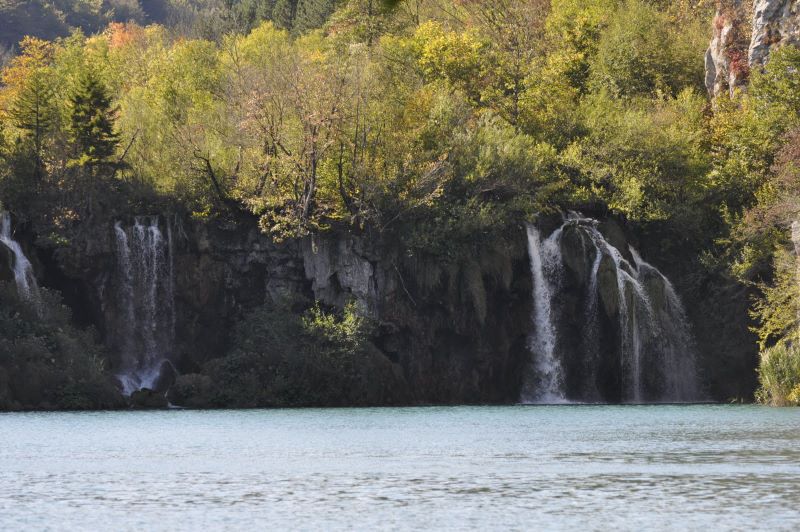
Above that waterfall, we came to Lake Milanovac. These canyon-like walls carved by waterfalls were typical of the lower lakes.
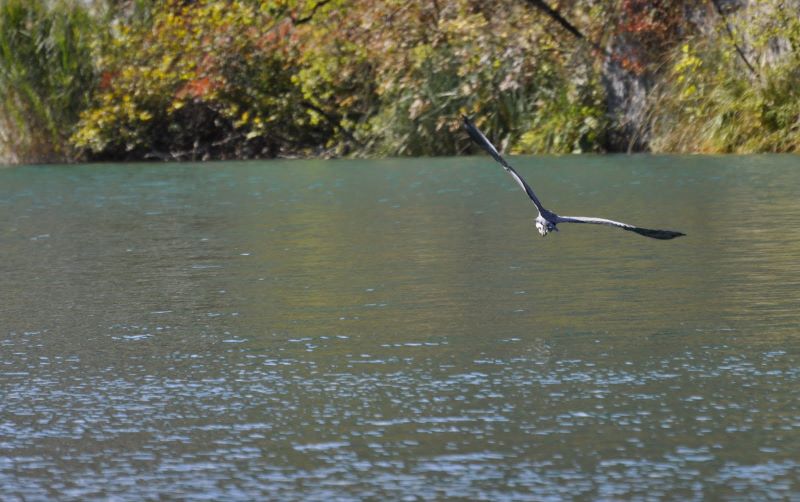
Plitvice Park is home to 70 breeding species of birds and over 125 species in total.
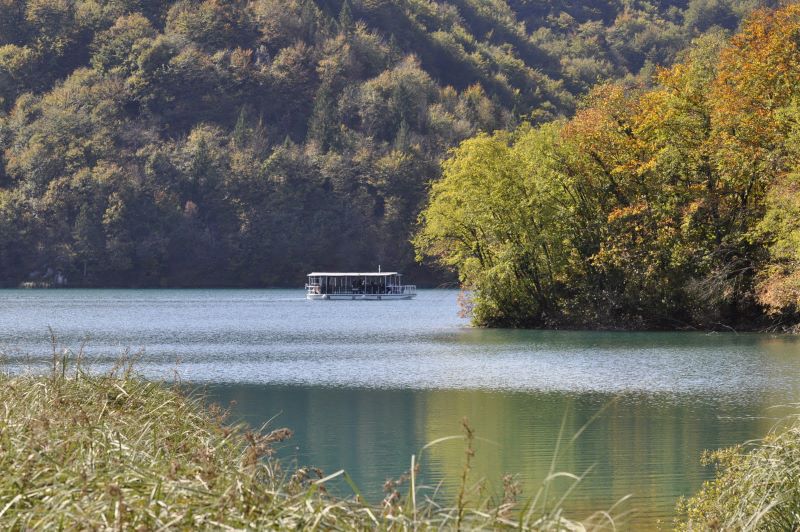
Our tour ended with a ride back to the bus on the ferry.
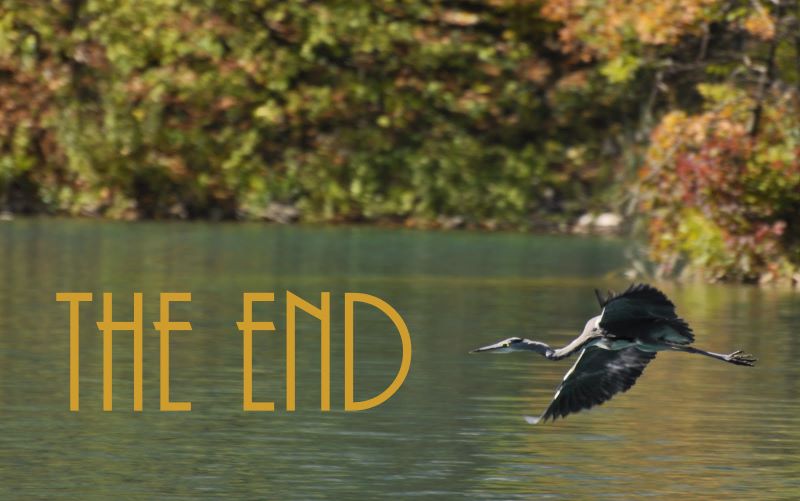
Thanks for visiting. See all of our travel photos including many from our trip to the Dalmatian Coast by clicking here.
|
Please join us in the following slide show to give Plitvice Lakes National Park the viewing it deserves by clicking here. |
|
Geek and Legal StuffPlease allow JavaScript to enable word definitions. This page has been tested in Internet Explorer 8.0, Firefox 3.0, and Google Chrome 1.0. Created on 11 January 2010 |
 |